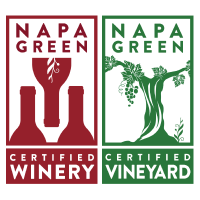Climate Action &
Regenerative Farming
SUSTAINABILITY LEADERSHIP PILLAR:
Climate Action & Regenerative Farming
Each of the other five pillars all contribute to climate action. Energy and water efficiency is critical in the vineyard and winery, and reduces operational carbon footprint. Similarly with recycling, composting and green purchasing. Reducing pesticide and fertilizer use also means reduced manufacturing, shipments, and costs, not to mention that nitrous oxide (which results from nitrogen fertilization) is 200x more potent that CO2 emissions. In terms of social equity there are considerations like employee commute and public transportation, as well as many examples where employees who work for leading businesses committed to sustainability will take these practices home with them, broadening the impact.
Then there are next steps in climate action, like renewable energy (first ensuring you don’t “solarize your inefficiencies”) and Electric Vehicle (EV) charging. As well as hot topics like LIGHTEN UP! – reducing bottle and packaging weight.
Next, you may ask, what is this “Regenerative” buzzword? These are win-win practices like cover crops, compost, reduced tillage, reduced fertilizer and pesticide use, planting hedgerows, preserving and restoring riparian and forest habitat, which increase soil health, water and nutrient retention, biodiversity, and vineyard resilience to drought and increasing high heat days. At the same time these practices store more carbon in the soil – called carbon sequestration. It is exciting that growers have an active and meaningful role that they can play in drawing down carbon emissions and being a part of the climate change solution!
Here are some other examples of how sustainable vineyards and wineries are taking climate action:
- Napa Green Certified Vineyards receive custom “Carbon Farm Plans” for each of their vineyard properties and commit to ongoing practices to enhance soil health AND store carbon. The International Panel on Climate Change (IPCC) has identified “nature-based solutions” as one of the top 5 ways to fight climate change
- Joining the Porto Protocol and committing to be a part of the climate solution
- Opting up to “Deep Green” with Marin Clean Energy (MCE) and receiving 100% renewable energy from CA wind and solar
- On average, 30-50% of a winery’s carbon footprint lies in packaging and distribution, so let’s dismiss this idea that “bigger is better” and lighten up bottle weights and packaging, which cuts material and shipments costs, and can reduce breakage
- Rethinking overnight shipping and long-distance business trips, as air freight and travel is a huge source of emissions. IF you do fly purchase verified carbon offsets
- Installing nitrogen onsite, eliminating bottled water deliveries, and reducing waste pickups all reduces trucks on the road, reducing transportation emissions
Cain Champion Story
In the 2020 Glass Fire, we lost almost everything. We have a choice: to adapt and learn proactively or be forced to change by tragedy. We also have to ask ourselves if we are prepared for our vineyard to burn again. We have 100% cover crop and the dry grass may have been a factor in our loss. But we won't stop farming organically or remove cover crop, because nurturing the health of our soils is the highest priority. In some ways this is an opportunity. We will be planting new varieties better suited to high heat and drought. Ultimately, probably 50% of the vineyard will be more climate resilient varieties. Water has always been limited for us, so in replanting we are installing double drip lines for even more targeted irrigation. Each one of our full-time crew, most with 10+ years of tenure, has a dedicated area to manage. Any vines that are here today, and will be here tomorrow, are because of the team – their tenacity and dedication, their love and connectedness. We have to have faith that this place will ultimately prevail.
CLIMATE ACTION & REGENERATIVE FARMING champion Stories
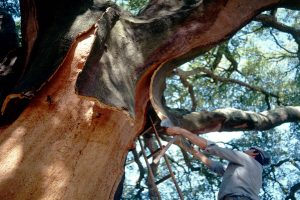
Natural Cork is a Win for Planet and People
Natural cork is the most sustainable wine closure. Did you know that cork is made from the bark of cork oak trees? The bark cannot be harvested until the oak tree is 25 years old, and is then harvested every nine years, using ancient harvesting techniques. The bark harvest actually prolongs the life of the trees, which can live from 100 to 300 years.
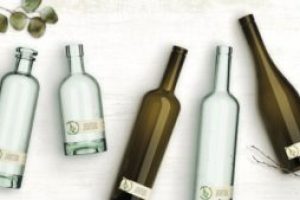
Lighten Up
Packaging plays an important role in customer perception. We are hearing more and more stories from Napa Green members about the benefits of greener packaging AND customers giving kudos for eliminating Styrofoam and lightening packages.
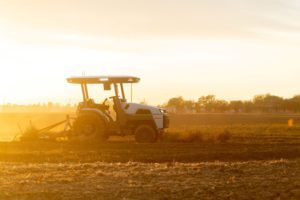
Climate Action and Electric Tractors
When discussing reduced herbicide use or organic farming, a common argument made is that more tractor passes are required, which increases emissions and the carbon footprint of vineyard operations. However, that no longer has to be the case as electric tractors are entering the market that are competitive with, or even outcompete, conventional tractors.

It’s Electric!
Electric vehicles (EV) are growing in popularity, making a winery’s decision to install EV charging stations not only a sound environmental investment but an opportunity to attract eco-conscious consumers. Wineries with EV charging stations are hearing the same story: A guest was in need of a charge, found that the nearest station was at a winery and decided to stop in for a taste while plugged in.
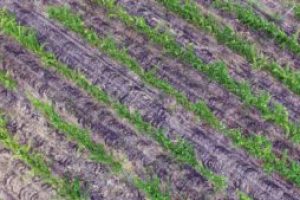
The Benefits of Biochar
Biochar is a form of charcoal that is being tested as a soil amendment in several vineyards throughout Napa County as growers look to improve soil health, increase carbon capture and reduce nutrient inputs. Among those exploring the use of biochar are Cakebread Cellars, Spring Mountain Vineyard and the Napa Resource Conservation District (RCD), which manages an experimental vineyard in Carneros.
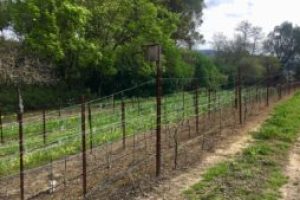
Silenus Winery Takes Farming to the Next Level
April is a time of growth – when plants move from dormancy to bloom and the Napa Valley’s landscapes are lush and green, with the rivers and streams full from early spring rains. During April, we also celebrate Down to Earth month, making it a great time to think about soil health and how to manage property using “Carbon Farming.
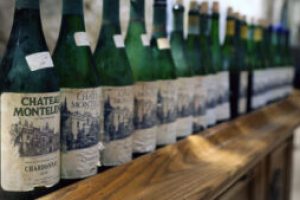
Chateau Montelena: Bringing Together Green Technology and Napa Valley History
Chateau Montelena Winery is a stone building nearly 130 years old. But that doesn’t stop winemaker Matt Crafton and members of their leadership team from implementing cutting edge technologies that save energy, water and money while maintaining the integrity of this historic building.

